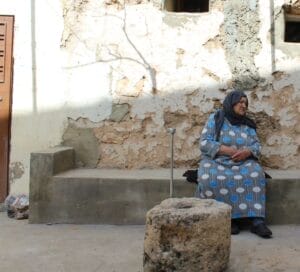
"The weather is changing and the forests are disappearing. We do not have enough water,
fish do not eat and do not lay eggs. We have to buy fish at the market, but we don't have enough money and we are forced to get into debt."
Chem Oeurn and his family have always lived near Cambodial’s Tonle Sap, the largest freshwater reserve in Southeast Asia and a UNESCO biosphere reserve.
Due to climate change, it has become extremely difficult to get food for Chen’s family in recent years. Thus, they are looking for alternatives to fishing and are trying to diversify their income with small agricultural productions. However, this year, due to the prolonged drought, the harvest was very poor. Many members of Chen’s family have already migrated to Thailand or to other provinces, but migration has become more difficult now due to Covid-19.
Cambodia is among the countries least responsible for global climate change and yet it is one of the most affected by it: it is among the three most vulnerable Asian countries. To assess the impact of this environmental disaster on the poorest communities, we teamed up with the University of Phnom Penh and studied the link between migration and climate change through field research and the production of two videos.
The research was conducted in the framework of the RESILIACT-Resilience- strengthening of local communities through a transnational EU Aid Volunteers capacity building action project, funded by the EU Aid Volunteers of the European Union.
The project aims, among other objectives,to strengthen the resilience and protection of local communities in South and South-East Asia, which are affected by issues related to food security, migration as well as climate adaptation.
“The main issues faced by Cambodia are floods, droughts, deforestation, urban waste, and pollution by agriculture such as the use of chemical fertilizers and pesticides,” explains Seak Sophat, Ph.D., Vice-Dean of the Faculty of Development Studies, and a Coordinator of the Master of Science in Climate Change Program at the Royal University of Phnom Penh.
“The frequency and intensity of floods and droughts has also increased across the country,” he adds. Analysis of temperature and rainfall data of Cambodia found that the average annual temperature has increased by 0.8 degrees since 1950, while rainfall is decreasing at the rate of 0.184% per year. Communities in Cambodia are already experiencing the effects of these changes.
The lake where Chem Oeurn lives, heavily depends on the yearly monsoon rains and the Tonle Sap river, which pours into the lake, along with the Mekong. Due to this phenomenon, the lake’s volume varies considerably over the course of the year. At the peak of the rainy season, in late September and October, it expands 10-fold, sparking a seasonal migration of fish of communities who depend on it.
In recent years, the lake and its surrounding ecosystems have been increasinglcy impacted by deforestation, infrastructure development and climate change, which are affecting the natural way of life on the lake.
The team of researchers confirmed that Cambodia’s vulnerability is largely due to its relatively low adaptive capacity.
“Many choose migration as a solution,” explains Mr. Sokchar Mom, director of the Legal Support for Children and Women, a Phnom Penh-based NGO, partner of We World. Among push factors for migration, the expert cites poverty, lack of job opportunities, debt bondage and, increasingly, climate change.
“Farmers often do not have enough funds to run their family-owned farmlands, so they have to get a loan from microfinance institutions or private lenders. When they fall into debt, they look for a job available in their area, but when there is no job for them, another choice is to migrate to other areas or provinces.”
Climate change plays a role in this as well. “The effects of natural disasters prompt people to migrate. Farmers depend on agriculture and flooding, drought, and decreasing rainfall are all serious issues for them and they must seek solutions to secure their living,” adds Mr Sokchar Mom. Preferred destinations of internal migration include Phnom Penh as the economic, industrial and commercial hub, followed by Sihanoukville with its international port and rapid development and Siem Reap - the city of tourism. “If climate change keeps unfolding, migration for job opportunities will increase,” adds Dr. Seak Sophat.
At the same time, newcomers to Phnom Penh often face health issues caused by air pollution, poor living conditions, deteriorating diet due lack of funds and increasing food prices. Furthermore, lack of family bonding opportunities and a financial safety net take an additional toll on migrants.
In order to mitigate the effects of climate change, researchers suggest that, while individual contributions are valid, systemic and rights-based approaches that favor marginalized groups are needed.
These include, among others, building up social capital, strengthening communal resilience and enhancing co-learning among migrant workers.



